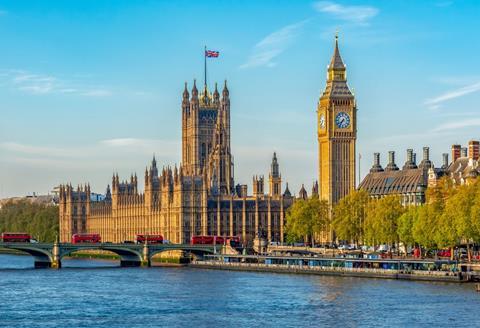The government will today introduce the much-anticipated Pension Schemes Bill to parliament, setting the stage for a wide-ranging and ambitious overhaul of workplace pensions in the UK.
The bill contains a significant number of policies and legislative changes affecting defined contribution (DC) and defined benefit (DB) pension schemes, as well as the Local Government Pension Scheme (LGPS).
These include many measures outlined in the final report of the Pension Investment Review, published last week, including:
- The creation of DC “megafunds”, including requiring master trusts and other major auto-enrolment schemes to have at least one default arrangement with a minimum of £25bn in assets.
How the Pensions Investment Review will change DC default funds (29 May 2025)
What Canada’s pension funds can teach UK DC ‘megafunds’ (13 March 2025)
TPR overhauls DC supervision to support ‘megafunds’ growth (20 February 2025)
- Changes to surplus rules, allowing trustees to release surplus funds to members and sponsoring employers “when safe to do so”.
Trustees to be given full discretion over DB scheme surplus release (30 May 2025)
TPR signs off on release of ‘trapped’ surplus in Littlewoods Pension Scheme (4 June 2025)
Surplus plans welcomed by trustees but concern raised over ‘deadlock’ cases (2 June 2025)
- Further requirements for LGPS funds and pools to accelerate the consolidation of assets and reduce the number of pools from eight to six.
March 2026 deadline confirmed as government eyes ‘backstop’ power (29 May 2025)
Government rejects pooling plans for ACCESS and Brunel (11 April 2025)
LGPS requests more time to manage pooling effectively (15 May 2025)
- New legislation for DB superfunds to encourage more providers to be launched.
How DB superfunds can help remove ‘regulatory straitjackets’ from pension schemes (21 May 2025)
Superfunds trump insurers for schemes exiting PPF assessment (28 November 2024)
Clara: Lessons from the first year of ‘superfunds’ (24 January 2025)
- The legislative framework for the planned Value for Money regime, including giving regulators the ability to shut down underperforming pension schemes.
Regulators propose ‘red-amber-green’ Value for Money framework (8 August 2024)
What TPR wants from Value for Money consultation (29 August 2024)
SPP: Hoping for clarity on Value for Money (6 November 2024)
- A requirement on DC schemes to offer “default pension benefit solutions” at retirement, to ensure members are supported in taking their pensions.
Attempting to solve the ‘nastiest, hardest problem in finance’ (26 May 2025)
The People’s Pension: How freedom and choice reshaped retirement - and what we can do next (30 April 2025)
Savers lack knowledge of retirement income needs, research shows (6 December 2024)
- The creation of a default consolidator system to automatically combine pension pots of £1,000 or less.
How the government plans to consolidate small pension pots (24 April 2025)
In Depth: 40% of master trust memberships could consolidate, study finds (12 February 2025)
How do you solve a problem like small pension pots? (16 April 2024)
The bill will also allow data from the Pensions Protection Fund (PPF) and Financial Assistance Scheme to be displayed on dashboards, as part of the government’s pledge to support the further development of pensions dashboards.
It will give the PPF the ability to set its levy at zero without compromising its ability to raise more from the industry in future, and it will re-establish the Pensions Ombudsman as a “competent court” to make it easier to recoup money.
Chancellor hails ‘game changer’ Pension Schemes Bill

Rachel Reeves, who has played a leading role in the Pensions Investment Review and the proposed “megafunds” plan, said in the official announcement: “The bill is a game changer, delivering bigger pension pots for savers and driving £50bn of investment directly into the UK economy – putting more money into people’s pockets through the Plan for Change.”

Pensions minister Torsten Bell added: “We are ramping up the pace of pensions reform. Workers deserve to get better bang for each buck saved, and these sweeping reforms will make sure they do.
“Pension saving is a long game, but getting this right is urgent so that millions can look forward to a higher income in retirement.”

Liz Kendall, the work and pensions secretary, said: “Hardworking people across the UK deserve their pensions to work as hard for them as they have worked to save, and our reforms will deliver a huge boost to future generations of pensioners.
“The bill is about securing better value for savers’ pensions and driving long-term investment in British businesses to boost economic growth in our country.
“As part of our Plan for Change we’re helping people find work, stay in work, and ensuring that work pays them back to give them the secure income in retirement they deserve.”
How the Pension Schemes Bill will proceed

The bill must now go through parliament’s legislative process, during which it will be scrutinised and debated by policymakers in the House of Commons and the House of Lords.
The process can take several months, depending on other parliamentary activity, how many amendments are made, and how long it takes to agree on the final text. Bills typically follow this process:
- The bill’s first reading is scheduled for today.
- The second reading will be the first opportunity for MPs to debate the bill’s contents. Timings are yet to be confirmed.
- A committee will then scrutinise the bill in detail and discuss amendments.
- Further amendments may be tabled at the report stage.
- The third reading is MPs’ last chance to debate the bill, but amendments cannot be made.
- The bill will then pass to the House of Lords, where a similar process takes place.
- After the third reading in the House of Lords, the bill will return to the House of Commons for further amendments to be considered. Both houses must agree on the final text.
- Once the final text is agreed upon, the bill will then be granted Royal Assent and become an official Act of Parliament.






















